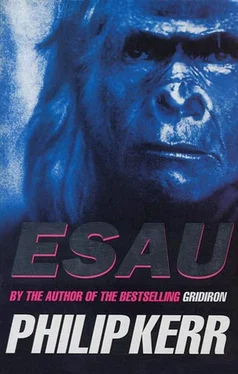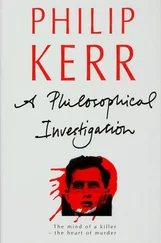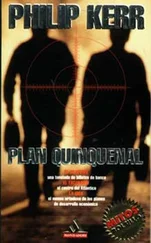The Indian gave a slight bow.
‘He’s our senior neuro-radiologist. If there’s an intercranial abnormality, Manareet will find it. Manareet, this is Swift. It’s not that she doesn’t have a Christian name, just that she’s rather touchy about the one she’s got.’
‘Pleased to meet you, I’m sure,’ said Manareet, taking Swift’s outstretched hand.
His pronunciation was so clear and his manners so impeccable that Swift thought that he must have been educated in England. She had known a few Indians like him at Oxford, most of them fabulously rich Old Etonians with cut-glass accents and better breeding than the British royal family.
‘I think Swift is a very nice name,’ said Manareet. ‘Like a bird, or a thought, or a small planet.’
Uncomfortable with any kind of compliment. Swift bit her lower lip as she tried to check the inane smile that threatened to linger on her face.
‘Ignore him,’ advised Joanna. ‘He’s too smooth by half.’
‘Are you English?’ he asked Swift.
‘Australian,’ she confessed. ‘But I was educated in England.’
‘Me too. I was at Winchester and after that, at Stanford,’ he explained.
Manareet glanced at his watch and then nodded at the box Swift was carrying.
‘Is that our patient you have there?’
Swift set the box containing the original skull down on Joanna’s desk and lightly tapped the lid.
‘In here,’ said Swift.
‘After your letter, I can hardly wait,’ said Joanna.
Joanna had already signed the confidentiality contract, but Swift had decided not to ask Manareet to do so. It wasn’t as if he was working in any related field. Besides, he was giving her his time and the CAT scan for nothing.
‘Okay, the machine’s ready to roll. If you’ll come this way?’
Manareet led the way down a corridor and into a large room where the huge, black CAT scanner was located.
‘Five or six years ago,’ he was saying, ‘this machine, the Picher 1200, was state-of-the-art. But these days we hardly ever use it. Nearly every patient we see now undergoes a different diagnostic process. Nuclear magnetic resonance imaging.’
Despite its reduced status, the CAT scanner looked impressive enough to Swift. Sleek, black, and with a business end shaped like a two-metre-high lifebelt, the Picher 1200 reminded her of an expensive stereo. The kind you might have to lie down inside to really appreciate.
Manareet removed the skull from the box, commented on its size, and then laid it on the padded leather headrest of a bed that extended inside the life belt where the X-ray emitter and detectors were housed. In computerized axial tomography, or CAT scanning, a laser beam rotates around the patient’s head and is itself surrounded by several hundred X-ray photon detectors to measure the strength of the penetrating photons from a whole host of different angles. The X-ray datum is then analyzed, integrated, and reconstructed by a computer to produce the intercranial images on a television monitor. Once they had a picture of the inside of the skull, they could construct an image of the brain that had once filled it.
Manareet made a few adjustments to the controls and then another engineer turned on the laser before retiring behind the protective lead screen with Swift and the two neuro-specialists.
Seconds later a thin laser beam like a strip of red candy began to fire intermittently at the skull.
‘All right,’ said a businesslike Joanna. ‘Let’s get the computer to generate a digital image of the brain that used to be inside that skull.’
‘No problem.’
Manareet sat down at the computer keyboard and began to type out a series of transactions.
‘Do you want 3-D or VR?’
‘Virtual reality,’ said Joanna. ‘Let’s get the real Spielberg look for this one. And 3-D for the hard copy.’
‘Are you planning to have this skull morphed, at some stage?’
‘Yes.’
Morphing involved the university’s biomedical visualization lab metamorphosing faces and sometimes even whole bodies to fit skulls and human skeletons, using algorithmic warp and dissolve software originally designed by Hollywood for movies like Terminator 2. Swift hoped they could graft an image of a living creature onto her specimen.
‘Then I might as well give you stereolithographic data as well,’ he said. ‘Save them doing it.’
‘Thanks a lot,’ said Swift. ‘If it’s no trouble, I’d appreciate it.’
‘It’s no trouble at all.’
In stereolithography a computer-guided laser hardens layers of plastic resin in the shape of the skull’s cross sections. A hard replica can later be used by the university’s biomedical visualization laboratory’s computer analysts to reconstruct a face on the skull. Computers had almost entirely replaced plaster of Paris and Bedacryl as the tools of choice for rebuilding and copying fossils.
‘This will take a little while,’ said Manareet. Leaning back on his chair, he collected a can of Pepsi off the desk.
The computer screen went black for a moment and Manareet sat forward on his chair.
A minute or two later the computer re-created the precise intercranial contours and dimensions of the skull, and they were viewing a high-resolution colour VR copy that the Picher 1200 had scanned onto the twenty-inch Trinitron screen.
‘All right,’ he said. ‘Let’s do a little caving, shall we?’
He pushed the mouse forward on its pad, entering the skull through an eye socket and searching the interior of the cranium as if he were a real estate agent showing someone around the image of an empty house.
‘Looking good,’ nodded Joanna. ‘But let’s see the brain that would fit this, shall we?’
‘No easier said than done,’ declared Manareet, and hitting the return on the keyboard, he replaced the VR image of the skull with one of a brain.
To Swift the image looked real enough for her to lift the brain out of the computer monitor and place it in a tank of formaldehyde, like Frankenstein preparing to bring a cadaver to life.
‘That’s great,’ she said. ‘You can see nearly every lobe.’
‘There’s no nearly about it,’ said Manareet, turning the mouse one way to turn the image around, and clicking once to magnify a specific part, and once again to magnify it even further. ‘You can see every lobe.’
As if to prove it, he positioned the cursor over the occipital area and clicked the mouse several times until there was a clear view of a visual cortex.
‘How’s that?’ he said proudly.
‘Excellent,’ said Joanna.
Manareet clicked the mouse again and several seconds later handed Swift a CD containing all the images and digital information the CAT scan had recorded on the computer.
‘A gift.’
‘Thanks, Manareet.’ She fanned herself with the CD case.
‘No problem.’
‘Let’s take the CD to my office,’ said Joanna. ‘We can rim it through the neurological contour analysis program.’
Swift collected the skull off the scanner bed and returned it safely to the carrying box. On her way out of the scanning room, she smiled sweetly at Manareet.
‘Nice meeting you.’
‘The pleasure was all mine,’ he said. ‘You must let me cook you a meal sometime.’
‘Oh yes, you must,’ said Joanna. ‘Manareet makes the best barium meal in this hospital. Only he calls it a curry. I swear, the one I ate was so hot you could have photographed a perfect outline of my stomach.’
Swift laughed and kept on smiling at Manareet.
‘Ignore her,’ she said. ‘I’d love a curry.’
Joanna inserted the CD in the drawer of her computer, made a choice from the list of browse options on screen, and then waited for the selected VR data to load.
Читать дальше












